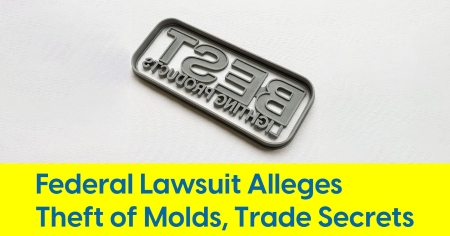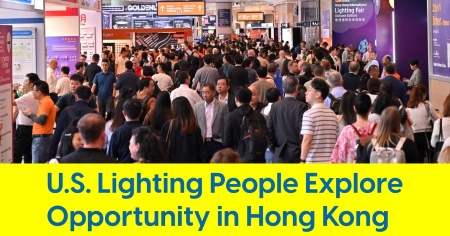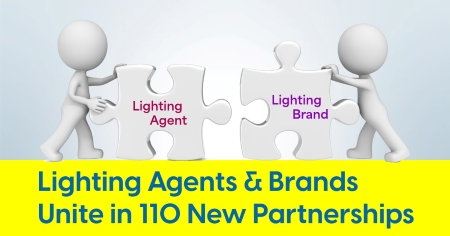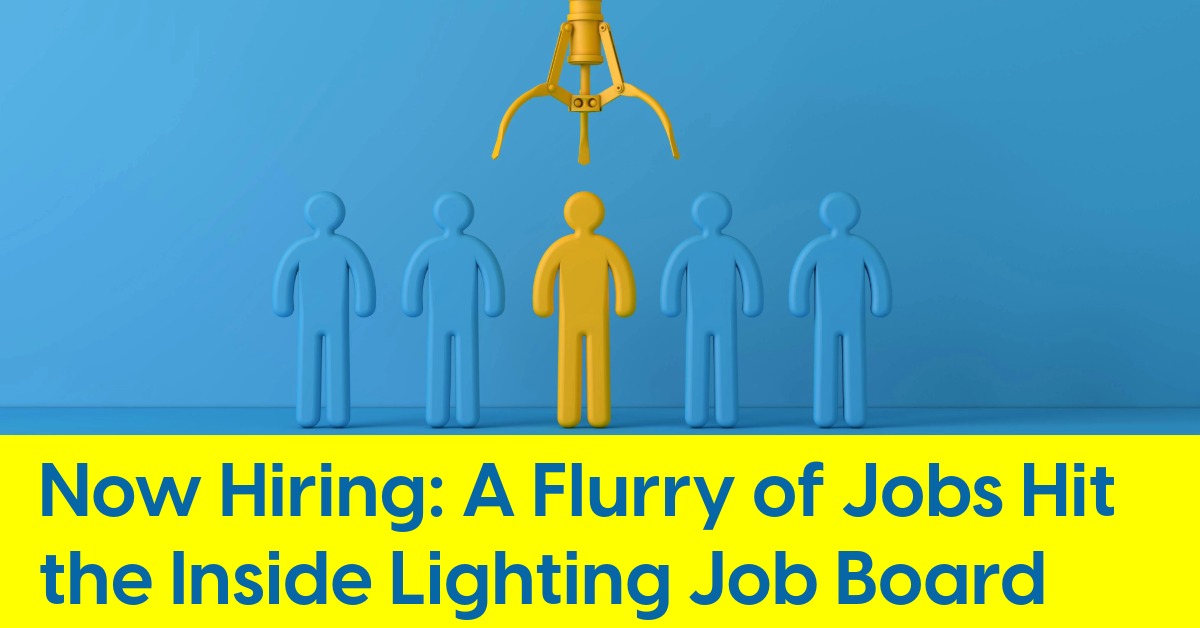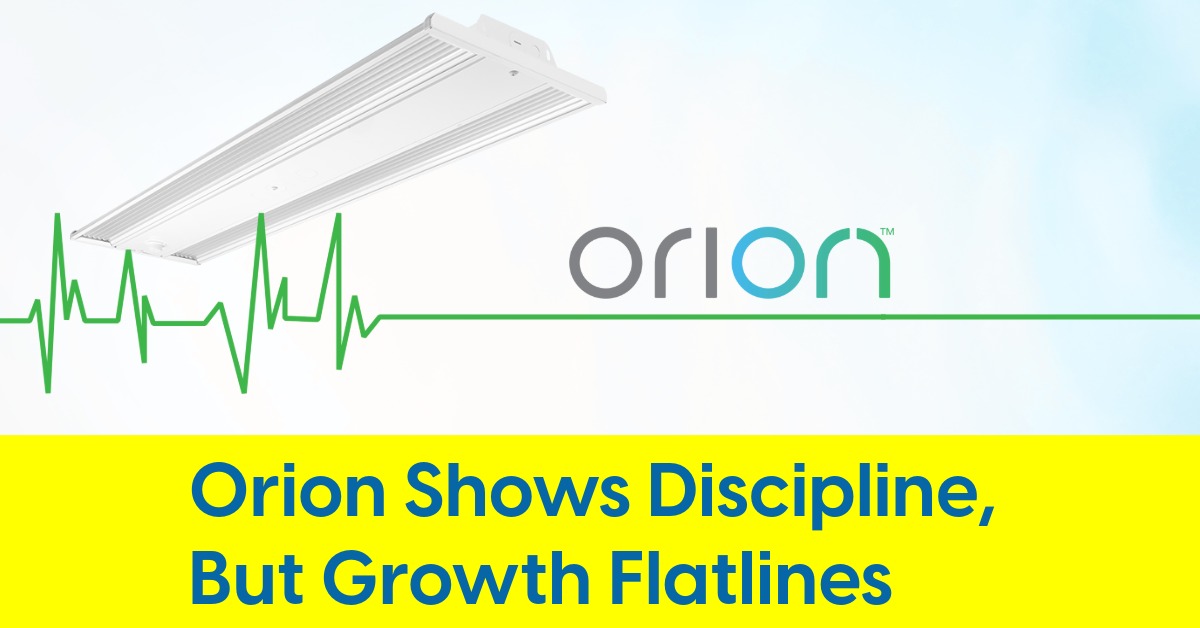May 6, 2025
Messe Frankfurt, Flair and the New Look of LightFair

The German trade show giant brings curated environments to its first U.S. lighting show
In Office Space (1999), Jennifer Aniston’s character, a waitress at a knockoff TGI Friday’s, gets scolded for not wearing enough “Flair” — those goofy little buttons meant to show enthusiasm. The scene is satire, of course, poking fun at manufactured emotion in hospitality culture.
But the joke lands because there’s a grain of truth: people do respond to atmosphere. Done right, the vibe of a place can shape how it’s remembered.
That’s the bet Messe Frankfurt is making in its first year as co-organizer and part-owner of LightFair. The German trade show powerhouse — best known in lighting circles for Light+Building and other international lighting events — isn’t reinventing LightFair overnight. But it is adding a distinct layer of experience, one that’s more cinematic, more curated, and more attuned to emotion.

“We really want them to be wowed and impressed and transported,” said Latoya Gooding, LightFair’s show director. “To feel like this is home — for them as lighting designers.”
That word — transported — keeps coming up. It’s not just about product anymore.
A Mood from the Start
Before attendees even reach the show floor at the Las Vegas Convention Center, they pass through a darkened registration area — part Space Mountain queue, part Hakkasan nightclub, minus the bottle service. The lighting is low, carefully controlled, and deliberately theatrical. This isn’t just a check-in point. It’s a decompression chamber. A reset.
Above: A sweeping video wall greets attendees with motion, color, and mood before they hit the show floor.
At the entrance to the exhibit hall is a large video wall, cycling through messaging about LightFair’s mission, with nods to IES and IALD, and headshots of influential lighting people paired with short testimonials. It’s not subtle, but it’s not meant to be. It’s stagecraft. And it sets the tone.
Rethinking the “Immersive” Concept
Last year, LightFair featured “immersive experiences” — built environments created by manufacturers and design firms. They drew solid reviews. So it raised some eyebrows when the new team initially didn’t continue the format.
Then came the course correction. Messe Frankfurt reintroduced immersion, this time with a sharper lens and in their style.
The centerpiece is the Trends Area, led by two design firms — Available Light (Steven Rosen) and AKLD (Anne Kustner). They handpicked fixtures from LightFair Innovation Award nominees and other exhibitors, creating a concentrated, semi-realistic display zone. Think less trade show aisle, more editorial layout.

Above: Lighting designers Rachel Gibney and Anne Kustner arrange sand as part of the Trends area display.
“We pulled fixtures from every exhibiting manufacturer we could,” said Rachel Gibney of Available Light. “Then we curated it, so it’s a bit of an experience.”
The Trends area will allow attendees to view multiple winners of the LightFair Innovation Awards in one space, installed in a thoughtful way. The setting includes sand, greenery and unexpected textures. The lighting is architectural, with both indoor and outdoor applications. It’s designed not just to showcase new tech, but to evoke a built environment designers would appreciate.
A Signature, Not a Takeover
There’s a fine line between reinvention and alienation. Messe Frankfurt isn’t trying to erase LightFair’s past. But it is trying to elevate it.
“We want attendees and exhibitors to feel like someone new is in town,” said Gooding. “Someone who gets us.”
And it shows — in the environmental design, the visual hierarchy, even the mood shifts built into the show entrance. There’s a clear sense that LightFair is trying to be more than a marketplace. It’s trying to be an experience. And not the kind of experience that demands 37 pieces of flair.
Flair shapes the first impression. Lasting ones come from what you learn and who you meet.
